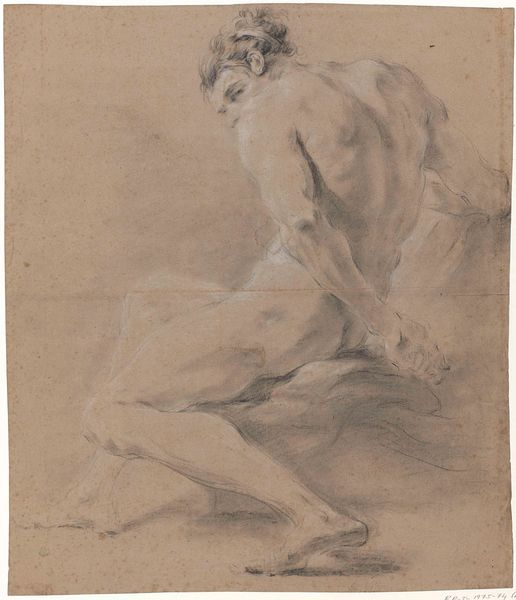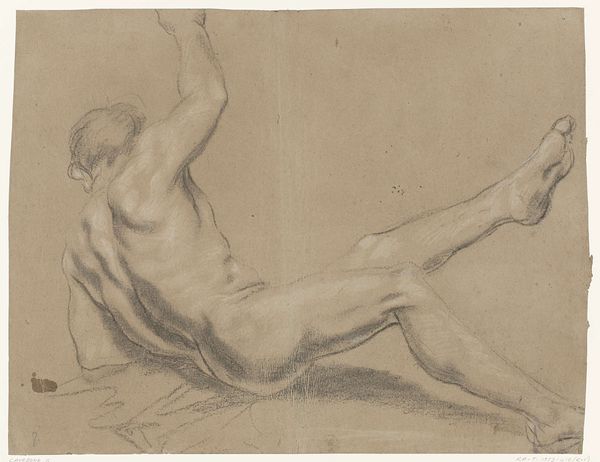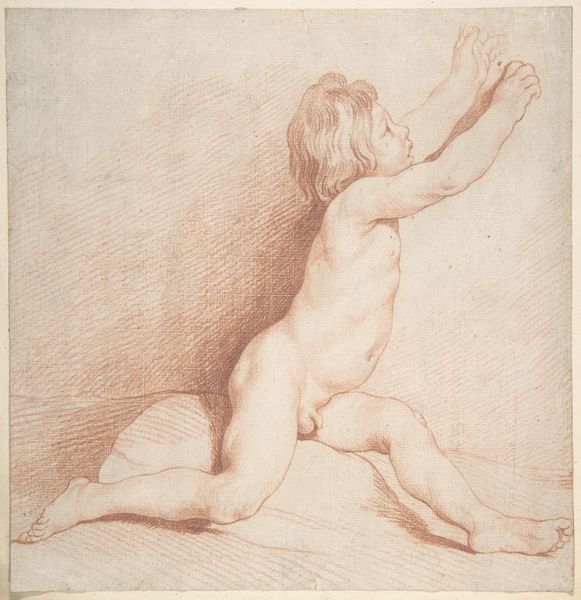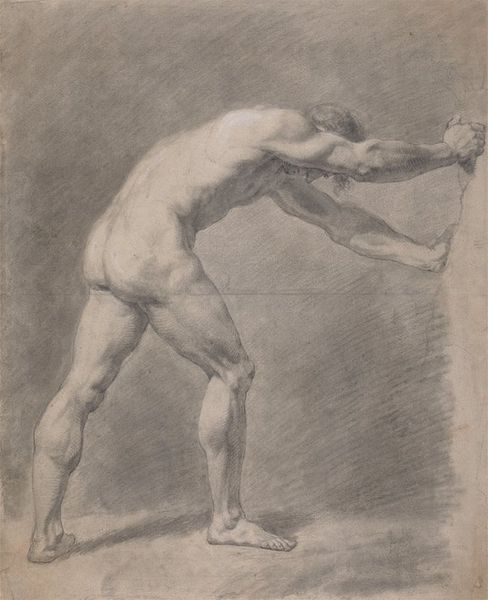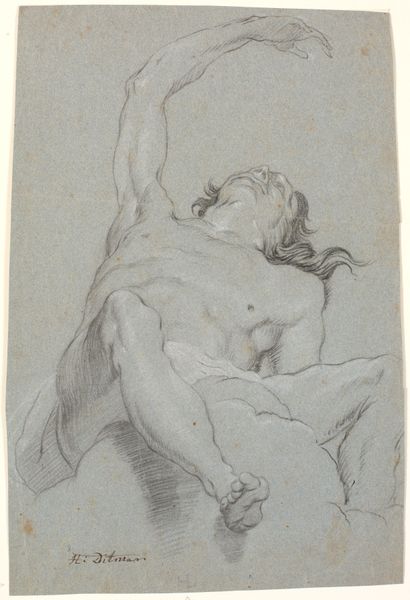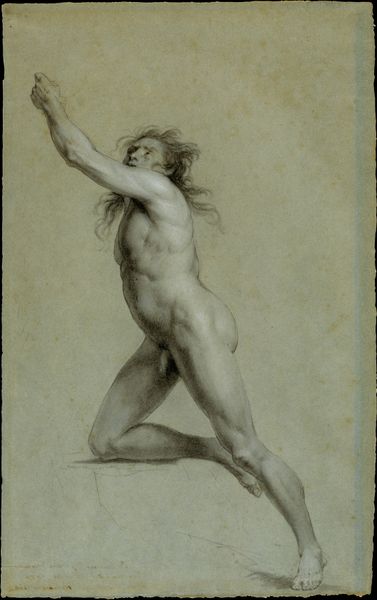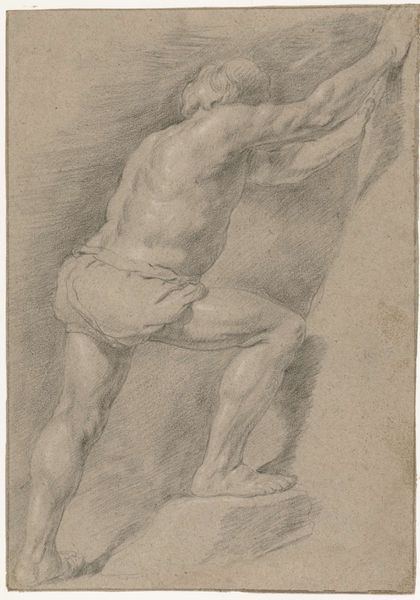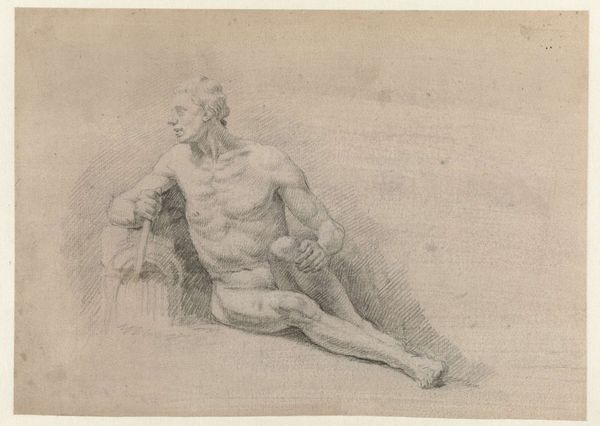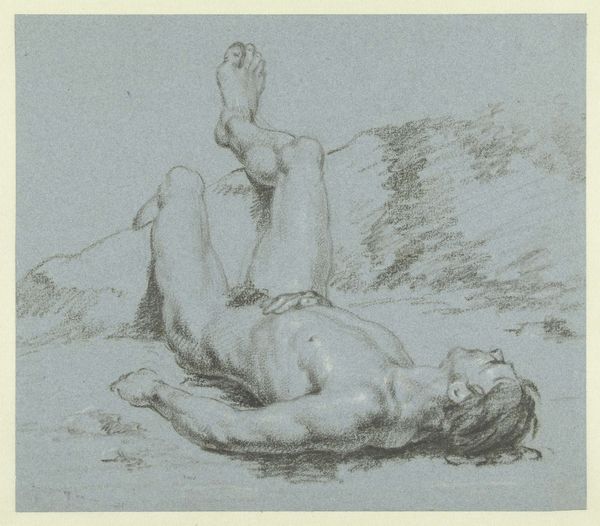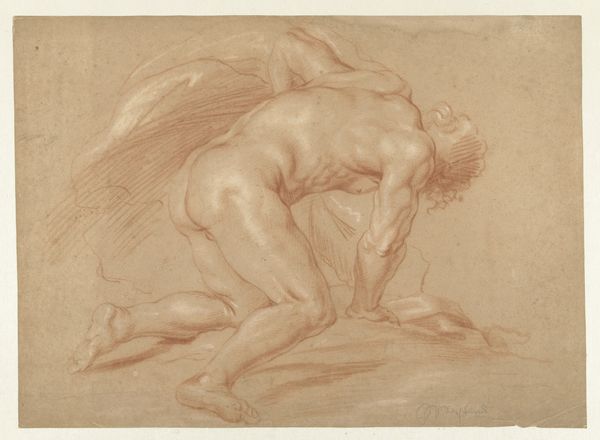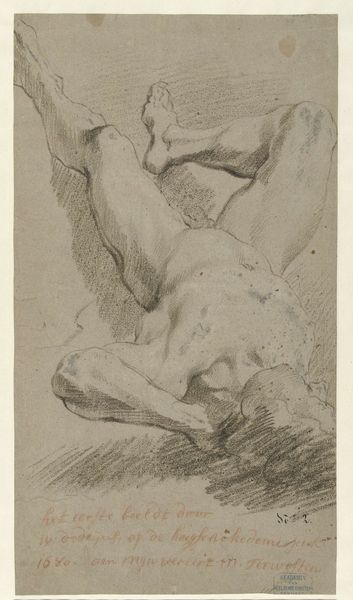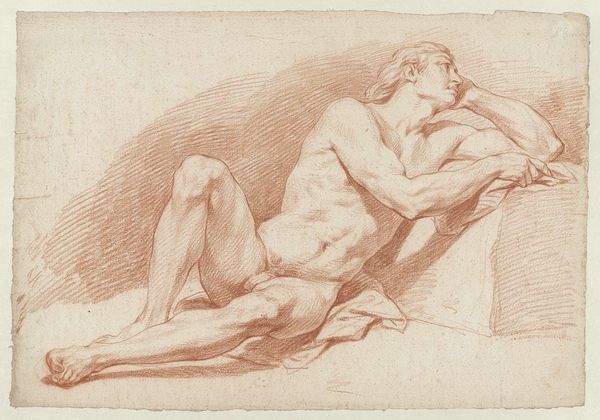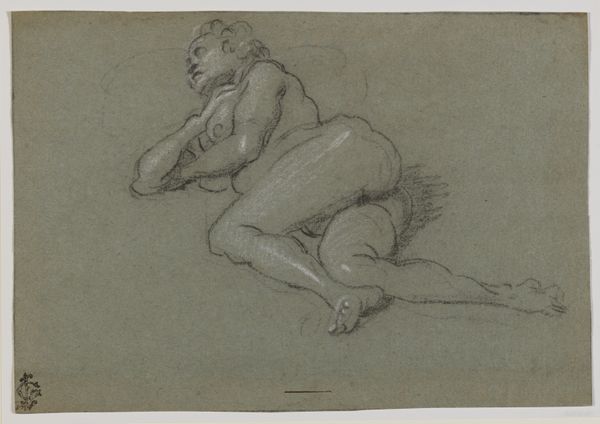
drawing, charcoal
#
drawing
#
pencil sketch
#
charcoal drawing
#
pencil drawing
#
underpainting
#
romanticism
#
portrait drawing
#
charcoal
#
academic-art
#
nude
Dimensions: height 350 mm, width 478 mm
Copyright: Rijks Museum: Open Domain
Curator: It has this quality about it. Editor: Indeed. What grabs you first about this piece, called "Study of a Male Nude, Lying on His Stomach" by Lambertus Antonius Claessens? The drawing, created between 1773 and 1843, employs both charcoal and pencil. Curator: The almost desperate reach of that extended arm. It's like he's caught between repose and frantic grasping, and you don't know which is winning. Very internal, very dramatic, even if understated. Editor: Precisely! It’s intriguing to see a Romantic era artist using the academic tradition of nude studies, but injecting it with such evident emotion. During the period, nude sketches like this were very popular, mostly regarded as studies or preparations for the "great" paintings. In short, they are perfect material for artists and scholars, like a behind-the-scenes peek at what was going on in his head. Curator: It definitely has a restless quality, almost feverish. He is stretched out, yet everything, down to the way the light catches the muscles, feels charged, intentional, like an interrupted gesture in a play, perhaps. It also strikes me, he’s alone… with this tension? It's a kind of raw and private feeling, isn't it? Almost voyeuristic to be looking in. Editor: And while there isn't really anything groundbreaking about its theme and aesthetic that moves between Academicism and Romanticism, I can't deny it has a powerful psychological undercurrent. I wonder if he would ever produce the grand work derived from this sketch, in the end. And why he did not use color, because sometimes color can soften the image. But hey! that is also an appealing factor for art critics. Curator: It also seems… fragile? I realize that's probably because it's a drawing, but the charcoal and pencil give a vulnerability you wouldn't necessarily get from a finished oil painting. So many ways to read that vulnerability! Editor: True, this “flaw” is somehow the appeal of the art. It reminds us of the practice of sketching; something impulsive and unplanned in its origin. Thanks for sharing those reflections; the piece offers so much once we stop and let it speak. Curator: Thanks, I look forward to our next chat about art!
Comments
No comments
Be the first to comment and join the conversation on the ultimate creative platform.
